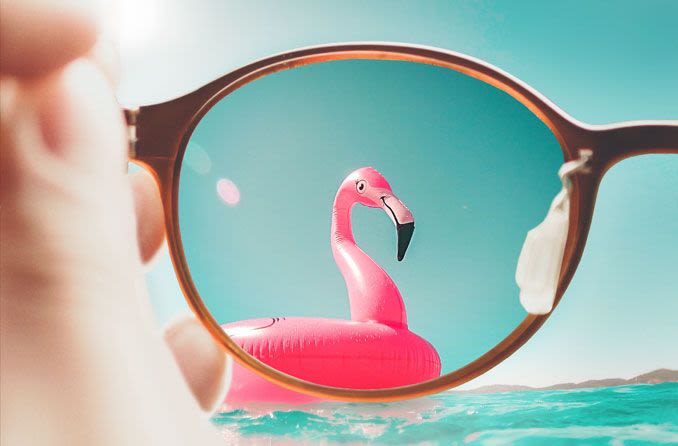Polarised sunglasses: Best for reducing glare

Polarised sunglasses always have been very popular among people who spend a lot of time near water; and for good reason — polarised lenses block glare from light reflecting off the surface of the water better than an other type of sunglass lenses.
Sunglasses aren't just for people who love sailing, fishing or going to the beach. Anyone who is bothered by glare outdoors can benefit from these advanced lenses.
Polarised sunglasses can be helpful for driving, too, because they reduce glare caused by reflections from flat surfaces, such as the bonnets and windows of vehicles and light-coloured pavement, as well as other wet or shiny surfaces.
Some light-sensitive people, including someone who has had cataract surgery, also will benefit from polarised sunglasses.
How do polarised lenses work?
Sunlight scatters in all directions, when it strikes flat surfaces, the light that is reflected by the surfaces tends to become polarised — meaning the reflected light beams travel in a more uniform (usually horizontal) direction. This creates an annoying and sometimes dangerous intensity of light that causes glare and reduces visibility.
Polarised lenses have a special filter that blocks this type of intense reflected light, reducing glare and discomfort.
Though polarised sunglass lenses improve comfort and visibility, you may encounter some instances when these lenses aren't advisable. One example is downhill skiing, where you actually want to see the bright patches of reflected light because they alert you to icy conditions. The same applies to pilots, both amateur and professional, where the polarising lenses can hide the 'glint' of light off another distant aircraft potentially creating hazardous situations.
Also, polarised lenses reduce the visibility of images produced by liquid crystal displays (LCDs) found on some digital screens, such as cash machines (ATMs) and petrol pumps.
With polarised lenses, you also may find it more difficult to see the screen on your phone (depending on the type of screen technology used).
Sailors and pilots also may experience similar problems when viewing LCD displays on instrument panels, which can be a crucial issue when it comes to making split-second decisions based strictly on information displayed on a screen.
Despite these exceptions, polarised sunglasses offer great advantages when it comes to decreasing eye strain and discomfort in bright sunlight.
Polarised sunglasses: Other considerations
Polarised sunglasses with progressive lenses are a great choice for people over age 40 who spend significant time outdoors.
Polarised sunglasses with photochromic lenses are a great choice for anyone who is frequently in and out of the sun on any given day.
As polarised lenses reduce reflections from water, they significantly improve your ability to see objects below the surface of a lake, river or the ocean (a great benefit for both fishing and sailing).
For the best comfort and performance with any polarised sunglasses, ask your eye care professional about having anti-reflection coating applied to the backside of the lenses. This will eliminate distracting reflections from the back surface of your sunglasses when the sun is behind you.
Page published on Wednesday, 18 March 2020






